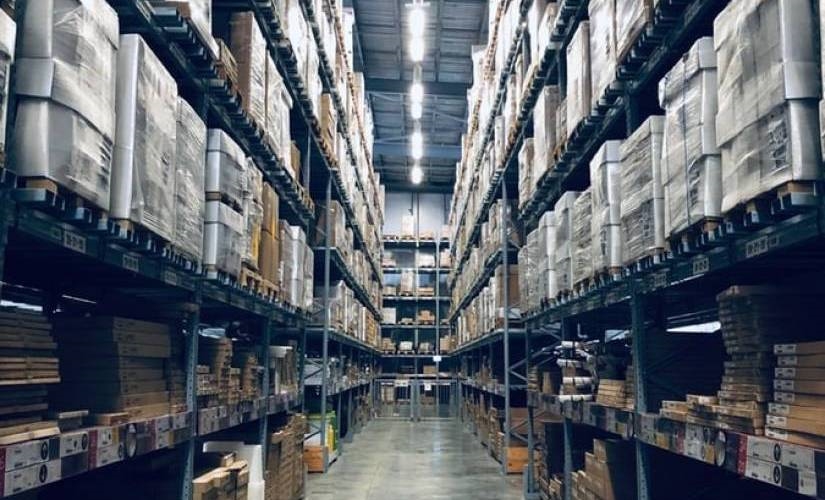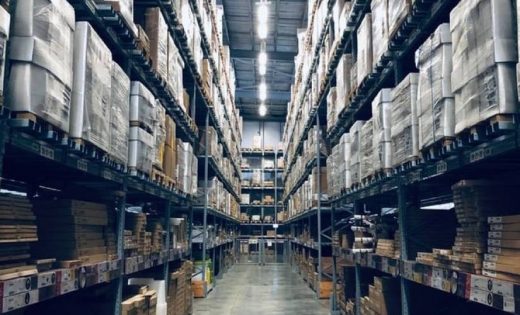IoT Ecosystem Creates an Optimized Smart Warehouse
IoT Ecosystem Creates an Optimized Smart Warehouse

IoT has potential in nearly every conceivable sector. As new technology spurs IoT growth across both commercial and industrial markets, the possibilities of this interconnectivity become increasingly evident. The organizations that see the most development in the coming years will be those that leverage this advancement. Here is the right IoT ecosystem that creates an optimized smart warehouse.
While many companies already use the IoT, not all take full advantage of it. A lot of companies have been slow to adopt the IoT in their warehouse operations. However, careful and thoughtful integration can create an optimized smart warehouse of the future.
Smart Warehouse Benefits
As the demand for faster, more reliable shipping grows, warehouses must adapt to meet higher standards. Traditional tools and techniques can only get logistics companies so far. If businesses are to stay competitive, they’ll have to move towards smart warehouses.
The most obvious benefit of a connected warehouse is increased efficiency. Devices like sensors and radio frequency identification (RFID) tags allow workers to locate products almost instantly. Insights from data gathered from IoT devices can help companies see where and how they could streamline processes.
Smart warehouses also offer safety benefits. The IoT enables increased automation, which reduces the risk of human error leading to injury. Sensors on heavy machinery can track integrity to warn workers if the equipment is in danger of malfunctioning.
A smart warehouse generates a lot more data than its traditional counterparts. Companies can assess this information to track products throughout the delivery process or monitor their quality. These data points can also offer insight into how to improve operations.
Despite 72% of warehouse executives looking to increase their IoT implementation, smart warehouses remain few and far between. While they provide competitive advantages, smart warehouses are an intimidating prospect to many companies. A few considerable speedbumps stand between logistics and widespread IoT adoption.
While the benefits of IoT devices are evident, where and how to apply them may not be. Similarly, concerns over compatibility and cost hinder many businesses from diving headfirst into complex IoT ecosystems. However, with careful consideration and planning, organizations can overcome these challenges and create smart warehouses.
Where to Implement IoT Devices
There’s no shortage of areas where companies can apply the IoT in warehouses. This abundance is undoubtedly an advantage, but also raises a few concerns, especially for businesses unfamiliar with IoT implementation. Companies can’t always integrate the IoT into all warehouse processes, so they have to determine what areas are the most advantageous.
IoT devices are more beneficial in some sectors than others. To optimize warehouses, companies need to be thoughtful about where they implement these technologies. Careless adoption may still provide useful data, but it won’t give businesses the highest return on investment.
The three main advantages of smart warehouses can serve as a guide for IoT integration. Different applications provide benefits in various areas of improvement. Whether a company wants to prioritize efficiency, safety, or data gathering will inform where to apply devices.
For Efficiency
To determine how to use the IoT to improve efficiency, warehouses can look to where mistakes occur. More often than not, inventory mismanagement is the most notable factor hindering warehouses. To address this issue, companies can use IoT technology in shelving and the packages themselves.
Most warehouses already use barcodes to track items, but RFID tags can store more data. RFID readers are also typically faster than barcode scanners, allowing workers to sort through inventory faster. Swapping barcodes for an RFID system would improve efficiency without much cost or hassle.
Warehouses can use sensors and weight measurements on shelves in conjunction with RFID tags. These sensors would improve the organization, which allows workers to find or store products faster. However, storage isn’t the only area where warehouses can use the IoT to increase efficiency.
IoT devices in building controls like HVAC systems could improve energy efficiency. These systems can automatically adjust to optimize usage, an option that’s particularly ideal for companies with limited spending ability.
For Safety
The IoT has two main areas where it can improve safety — automation and wearables. As more facilities see employees working side-by-side with collaborative machines, companies need to be sure robots are protecting humans, not endangering them. Safety in this regard depends mainly on a machine’s environmental awareness.
Devices like self-driving pallet jacks need to recognize their environment to avoid running into things. IoT sensors can help them see where obstacles are, and more importantly, if a human is in their way. Amazon uses this technology to help their robots identify workers and ensure their automation is safe.
Wearable IoT devices can improve safety by monitoring employee health factors. DHL uses wearables to track workers’ fatigue and suggest when they should take a break. These gadgets also alert employees if they’re near moving machinery.
Wearables protect employees’ long-term health while IoT-enabled robots protect their immediate safety. These two applications alone can substantially decrease workplace injury.
For Data Gathering
Not all data is created equal. The accuracy of analytic software depends not just on the quantity of available information, but the quality. Optimized IoT ecosystems gather data from the most relevant and informative sources.
The beauty of the IoT is that data collection comes as a perk with any application. The IoT devices warehouses use to improve performance also allow them to track efficiency numbers. Similarly, they can gather health and safety information from their wearables. The applications for these purposes produce the best data for monitoring them.
For big-picture logistics data, it helps to have IoT sensors throughout the supply chain. Sensors that monitor factors like light, temperature, movement, and humidity are ideal for tracking product quality in the shipping process. These IoT applications are often the most valuable for gathering supply chain data.
System Flexibility
One of the most significant barriers preventing smart warehouse adoption is concerns over compatibility. Successful IoT implementation relies on everything being able to work together. Issues in this area arise out of companies trying to use single-purpose solutions over an integrated approach.
Systems from various third-party vendors may not be compatible with one another. Before purchasing any IoT technology, warehouses need to ensure the new devices can function on the same system as their current devices. Businesses also need to consider scalability and backward compatibility.
Warehouses will get the most out of IoT systems if they’re compatible with legacy devices. Otherwise, new equipment across the board would be necessary, which can be costly. Businesses also need to ensure their systems are flexible enough so that they can incorporate new technology as it comes out.
Managing Costs
Without careful planning, creating a smart warehouse can be expensive. While investment in flexible IoT technology will pay off, companies shouldn’t go bankrupt trying to adopt as many applications as possible. The best way to build smart warehouses is to do so over time.
Businesses should start by implementing IoT devices in the most profitable areas before moving on to others. Taking a slower approach to integration not only saves money but also allows companies to learn how best to use these technologies. More time to adjust to new systems means less risk of more extensive, costly errors.
Developing a flexible system also helps manage costs. If a network is compatible with legacy devices, warehouses won’t have to worry about paying out for new, expensive equipment. Smart warehouses should save businesses money, so companies should consider costs when moving forward with them.
Warehouse 4.0 — The Future of Business Operations
The warehouse of the future, Warehouse 4.0, is one that is fully connected. Every process is trackable and controllable through a centralized network. This vision is impossible without the Internet of Things. By designing flexible, cost-efficient systems, businesses can create a more efficient and safer warehouse. With the rapid expansion of the IoT, these spaces are more of a reality than some companies realize.
The post IoT Ecosystem Creates an Optimized Smart Warehouse appeared first on ReadWrite.
(28)


